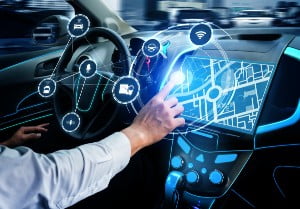Do Car Safety Systems Cause More Distracted Driving?
Posted on behalf of Jeff Pitman on September 17, 2021
in Car Accidents
Updated on April 24, 2024
 Newer cars today include more high-tech systems, such as lane-keeping and adaptive cruise control assistance. However, do these systems always work as intended? Could car safety systems cause more distracted driving and maybe even increase the risk of a crash?
Newer cars today include more high-tech systems, such as lane-keeping and adaptive cruise control assistance. However, do these systems always work as intended? Could car safety systems cause more distracted driving and maybe even increase the risk of a crash?
Read on to learn more about car safety systems today, including when they may increase the risk of a crash.
At PKSD, our Milwaukee traffic accident lawyers are here to help the injured. If you have suffered car crash damages caused by another driver’s negligence, call our law firm today for legal help. Find out if you have a case and get answers to your legal question in a zero-cost, no-obligation consultation.
Our Trusted Law Firm is Ready to Help. Ph: 414-333-3333
Car Safety Systems Designed to Help Prevent Crashes
Car safety systems, also called Advanced Driver Assistance Systems (ADAS) are designed to reduce crashes. When used properly, these features may greatly help to reduce the number of motor vehicle crashes, injuries and deaths.
Some of the most current car safety systems available include:
- Automatic emergency braking (AEB): This braking system automatically activates when another vehicle or object gets too close to your vehicle. The system deactivates when the driver takes over.
- Adaptive cruise control: A system activated by the driver to automatically control acceleration and braking of a vehicle, keeping it at a steady speed set by the driver. It can easily be canceled by braking or hitting a button.
- Lane-keeping assist: There are a few different versions of this car safety feature. Generally, drivers get either a visual or audio alert to warn them if they start to drift outside of their lanes. Some lane assist features may even intervene and adjust steering to help keep you in your own lane.
- Forward-collision warning (FCW): This system uses cameras, laser or radar to scan in front of the vehicle, alerting the driver if the other vehicle is getting too close, too quickly. Drivers are warned with audible, visual or haptic (touch, such as a vibration in the steering wheel) alerts.
- Blind-spot monitoring: A set of sensors is mounted on the vehicle’s side mirrors or back bumper. Drivers get an audio and/or visual warning that an object or vehicle may be approaching their blind spot.
- Pedestrian detection system: Forward sensors detect whether a pedestrian is in a vehicle’s path and apply automatic braking if the driver does not do so first.
There are many other features and advanced safety systems available in cars today. However, it is important to remember that no safety feature, however good, is error-free.
Why Car Safety Systems Could Lead to More Distracted Driving
The biggest risk perhaps of car safety systems is when drivers rely on them too much. It is easy to get over-confident or lulled into a false sense of security. Many drivers may become even more distracted by their phones, music or just chatting to someone in the car.
Other hidden risks for drivers using car safety systems include:
- Not taking time to get to know their car safety features, how they work and what they cannot do
- Zoning out, or getting distracted in other ways and being less attentive to possible road dangers
- Gradually getting too used to the audible/visual warnings – or tuning them out completely
- Manually disabling the feature, but forgetting it is off while still relying on being warned about a hazard
It is important to realize that car safety systems are intended to support, not replace, a driver.
Car Safety Systems Are Not Designed to Replace Driver Duty of Care
Car safety has come a long way, and it is likely to keep getting better. However, no car safety feature takes away a driver’s duty of care to others on the road. Drivers are still required to stay alert and prepared for an unexpected or approaching road hazard, pedestrian or another vehicle.
In short, regardless of the safety features a car may have, drivers must still:
- Follow all state and federal traffic safety laws
- Remain alert for other motor vehicles
- Be especially watchful for pedestrians and bicyclists
- Properly use turn signals when turning or changing lanes
- Use headlights appropriately and as required by law
- Attend to regular vehicle service and maintenance
- Take weather into consideration before getting behind the wheel
- Avoid speeding or other types of aggressive driving
- Not get behind the wheel while impaired by drugs or alcohol
- Avoid all types of distracted driving behavior behind the wheel
Injured in a Car Crash? Call PKSD for Legal Help Today
At PKSD, our clients are more than a number. We understand there are many challenges injured victims must deal with after a car crash. While we cannot take away the damages you have suffered, we are ready to help you to hold the at-fault party responsible. If we represent you, we will fight for maximum compensation on your behalf.
Call our law offices anytime, night or day, to get started. You can call today to schedule your free case review. If we take your case, there is nothing to pay us upfront. We do not get paid until or unless we recover compensation for you.
Millions recovered for our clients. Ph: 414-333-3333






